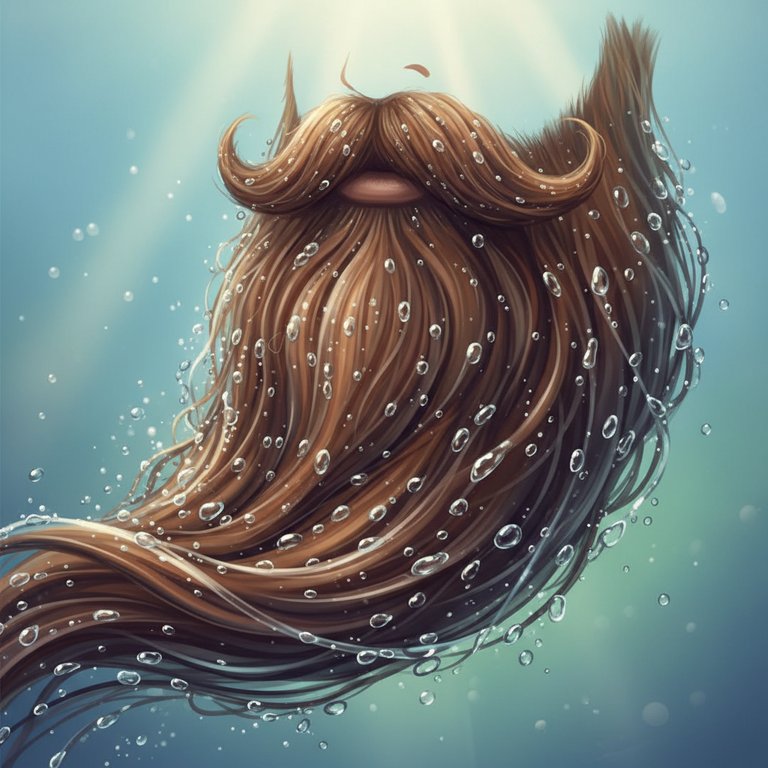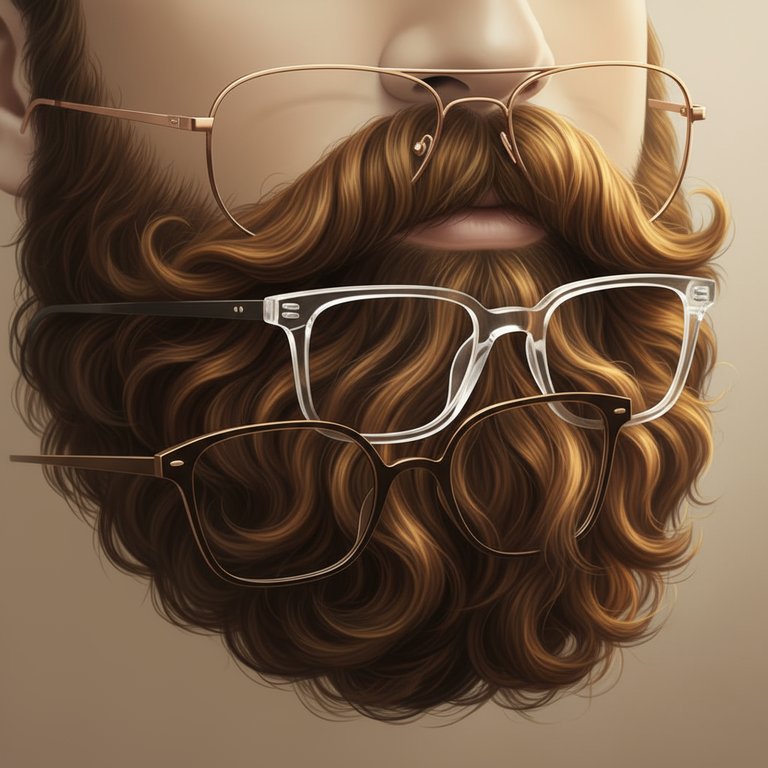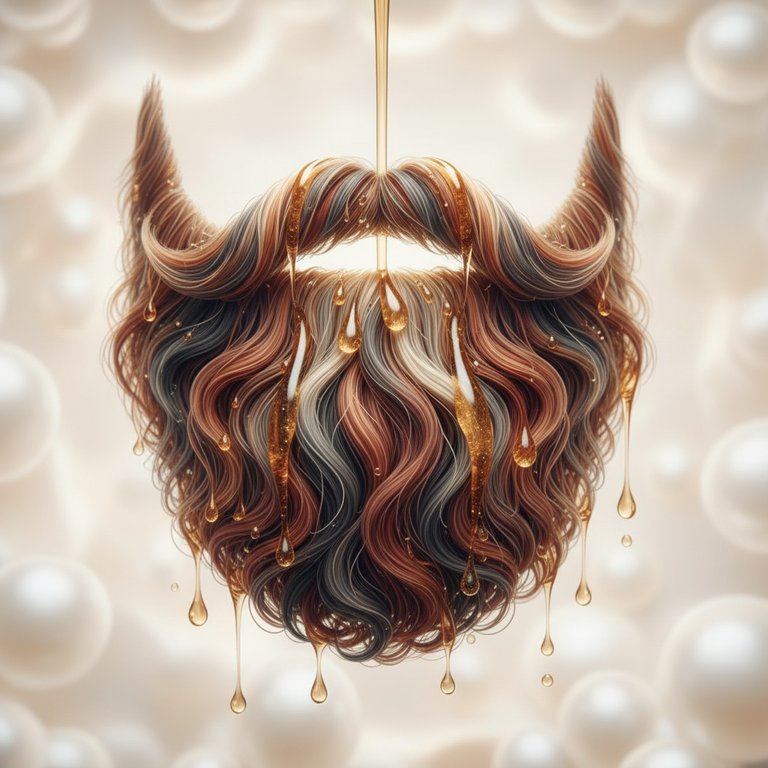Hey beard fam! Ever wake up and find a few too many beard hairs on your pillow or in your comb and think, "Uh oh, what's going on here?" We've all been there. Seeing your precious beard hairs making an early exit can be a bit alarming, especially when it seems like more than usual. But don't fret! Most of the time, there's a perfectly understandable reason behind it, and often, simple adjustments can make a big difference.
Today, we're going to dive deep into why your beard hair might be falling out more than usual. We'll explore the natural cycles, common culprits, and most importantly, what you can do to keep your beard looking full, healthy, and happy. Remember, this information is for educational and informational purposes only and is not intended to be a substitute for professional advice. We're just here to chat about grooming and keeping your magnificent mane in tip-top shape!
Understanding the Natural Cycle of Your Beard Hair
First things first: some shedding is totally normal. Just like the hair on your head, your beard hair goes through a natural growth cycle. It's not a static thing; it's constantly renewing itself. Think of it like the leaves on a tree – they grow, they mature, and eventually, they fall off to make way for new growth. Your beard hair does the same!
- Anagen Phase (Growth): This is the active growth stage, where your hair is getting longer and stronger. Most of your beard hairs are in this phase at any given time.
- Catagen Phase (Transition): A short transitional phase where growth stops, and the hair follicle shrinks.
- Telogen Phase (Resting/Shedding): This is the resting phase, where the hair is no longer growing but remains attached to the follicle. Eventually, the old hair sheds to make room for a new hair to begin its anagen phase.
So, finding a few hairs in your comb or on your shirt is just your beard doing its thing! The concern arises when that "few" turns into what feels like a significant amount. Let's explore why that might be happening.
Common Culprits Behind Increased Beard Shedding (Beyond the Norm)
If you're noticing more shedding than usual, it's time to play detective. Often, the reasons are tied to our daily habits and environment. Here are some of the usual suspects:
Grooming Habits – Are You Being Too Rough?
Your beard needs love, but sometimes, in our enthusiasm, we can be a bit too aggressive. This is one of the most common reasons for increased shedding or breakage.
- Aggressive Brushing/Combing: Yanking through tangles with a stiff brush or fine-tooth comb can literally pull hairs out, especially if they're not ready to shed.
- Harsh Products: Using shampoos or soaps not specifically designed for beards can strip your natural oils, making your beard dry and brittle. This leads to breakage, which can look like shedding.
- Excessive Heat Styling: Overusing blow dryers on high heat or heat-styling tools can damage the hair shaft, weakening it and causing it to break.
- Washing Frequency: Washing your beard too often can strip it of essential oils, leading to dryness. Not washing it enough can lead to product buildup and clogged follicles, neither of which are ideal.
Lifestyle Factors – The Unseen Influencers
What's happening inside your body and in your daily life can definitely show up in your beard.
- Stress: When life gets a bit crazy, your body responds, and sometimes that shows up in your hair. High stress levels can affect your body's normal cycles, including hair growth.
- Nutrition: Your beard needs fuel! Just like the rest of your body, your hair needs a balanced diet rich in vitamins, minerals, and proteins to grow strong and healthy. If you're not getting enough of the good stuff, your beard might suffer.
- Hydration: Water is key for everything, including healthy hair. Dehydration can lead to dry, brittle hair that's more prone to breakage.
- Sleep: Rest is when your body repairs and regenerates. Not getting enough quality sleep can impact your overall health, including the health of your hair.
Environmental Impact – What's Around You?
Your environment can also play a role in how your beard behaves.
- Dry Air/Harsh Weather: Extremely dry air, cold winds, or excessive sun exposure can dry out your beard and the skin underneath, making hair more susceptible to breakage.
- Pollution: Exposure to environmental pollutants can also impact hair health, though this is often a more subtle factor.
Your Step-by-Step Guide to Minimizing Beard Shedding
Alright, now that we've pinpointed some potential causes, let's talk solutions! Here’s your action plan to encourage a healthier, happier beard and minimize that extra shedding.
Step 1: Gentle Grooming is Your Best Friend
This is probably the easiest and most impactful change you can make.
- Comb and Brush with Care: Always use a wide-tooth comb or a quality beard brush (boar bristle is often recommended for its gentle detangling and oil distribution). Start from the ends and work your way up, gently untangling knots without force. Never brush or comb aggressively, especially when your beard is wet, as hair is more fragile then.
- Wash Wisely: Use a dedicated, sulfate-free beard wash and conditioner. These are formulated to cleanse without stripping natural oils. Washing 2-3 times a week is often sufficient, but adjust based on your activity level and beard type.
- Ditch the Heat (or Dial it Down): Air-drying is best. If you must use a blow dryer, use the cool or low-heat setting and keep it moving.
Step 2: Choose Your Products Wisely
Think of it like feeding your beard a healthy meal. Quality products provide the nourishment it needs.
- Beard Oil is Essential: A good beard oil moisturizes both your beard hair and the skin underneath. This helps prevent dryness, itching, and creates a healthy environment for growth. Apply a few drops daily.
- Beard Balm for Extra Conditioning: For added moisture, hold, and protection, a beard balm can be a great addition. It helps seal in moisture and can protect your beard from environmental stressors.
Step 3: Nourish from Within
What you put into your body directly impacts your beard.
- Balanced Diet: Load up on fruits, vegetables, lean proteins, and healthy fats. Foods rich in vitamins (especially B vitamins), minerals (like zinc and iron), and protein are building blocks for strong hair.
- Stay Hydrated: Drink plenty of water throughout the day. Your hair, like your skin, thrives on hydration.
- Manage Stress: Find healthy ways to cope with stress, whether it's exercise, meditation, hobbies, or spending time with loved ones. A calmer mind often leads to a healthier body, and thus, a healthier beard.
- Prioritize Sleep: Aim for 7-9 hours of quality sleep each night. This allows your body to rest, repair, and regenerate, which is crucial for overall health, including hair growth.
Step 4: Protect Your Beard
Give your beard a shield against daily wear and tear.
- Consider a Satin Pillowcase: Cotton pillowcases can create friction, leading to tangles and breakage. A satin or silk pillowcase reduces friction, being gentler on your beard while you sleep.
- Shield from Elements: If you spend a lot of time outdoors in harsh sun, wind, or cold, consider wearing a scarf or bandana to protect your beard.
Pro Tips for a Fuller, Happier Beard
- Consistency is Key: A consistent, gentle grooming routine is far more effective than sporadic intense treatments. Stick with it!
- Be Patient: Hair growth and recovery take time. You won't see results overnight, but with consistent care, you'll notice improvements over weeks and months.
- Listen to Your Beard: Pay attention to how your beard responds to different products, routines, and lifestyle changes. It'll tell you what it likes!
- Trim Smart: Regular, light trims can remove split ends and damaged hair, which makes your beard look and feel healthier and can prevent breakage that might be mistaken for shedding.
Your Beard Shedding Questions Answered!
Let's tackle some common questions beard enthusiasts have about shedding:
Q: Why does my beard feel thinner suddenly?
A: If your beard suddenly feels thinner, it could be a combination of factors. The natural shedding cycle might be more noticeable, or perhaps there's been a change in your grooming routine, diet, or stress levels. Sometimes, increased breakage from dryness or aggressive styling can also make it appear thinner. Take a moment to review your recent habits and see if anything stands out.
Q: How often should I wash my beard if I'm seeing shedding?
A: The ideal washing frequency varies, but generally, 2-3 times a week with a gentle, sulfate-free beard wash is a good starting point. Over-washing can strip your beard of its natural, protective oils, leading to dryness and potential breakage. On the other hand, not washing enough can lead to product buildup and clogged follicles. Find a balance that keeps your beard clean without feeling dry or oily.
Q: Can using too much beard oil make my beard fall out?
A: No, beard oil itself doesn't cause hair loss. In fact, it's designed to moisturize and condition the hair and the skin underneath, which supports a healthy environment for growth. Using too much oil might make your beard feel greasy or attract more dust, potentially leading to clogged pores if not cleaned properly. The key is moderation – usually just a few drops are enough to get the job done!
Q: How long does it take for beard hair to grow back after shedding?
A: Beard hair growth varies greatly from person to person. Once a hair sheds, a new one typically begins to grow in its place. This new hair will go through its own growth cycle, which can take several weeks to a few months before you notice significant visible length. Patience and consistent care are your best allies during this regrowth phase.
Q: Should I stop brushing my beard if I see hair falling out?
A: Not necessarily! Gentle brushing or combing is actually important for detangling, distributing natural oils, and removing hairs that have already shed. The crucial word here is gentle. Aggressive brushing, especially with a harsh brush or fine-tooth comb, can pull out hairs that aren't ready to shed, or cause breakage. Stick to a quality beard brush or wide-tooth comb and be soft with it.
Q: What happens if I neglect my beard and don't use any grooming products?
A: Neglecting your beard can lead to it becoming dry, brittle, and more prone to tangles, breakage, and split ends. The skin underneath can also become dry, itchy, or flaky. While it won't necessarily cause excessive shedding beyond the natural cycle, unhealthy, brittle hair is more likely to break off, making your beard appear thinner, less vibrant, and generally unkempt. Regular care helps maintain its strength, softness, and overall appearance.
Q: Can trimming my beard help with shedding?
A: Trimming your beard doesn't directly stop the natural shedding process, as shedding originates from the hair follicle. However, regular, light trims are incredibly beneficial for removing split ends and damaged hair. This improves the overall health and appearance of your beard, making it less prone to breakage, which can sometimes be confused with shedding. A healthier beard is a happier beard!
Conclusion
So, there you have it! Seeing a few extra beard hairs is usually just your beard's way of renewing itself, but if it feels like a lot, it's a good prompt to check in on your grooming habits and lifestyle. By being gentle with your beard, using quality products, nourishing your body, and managing stress, you're setting yourself up for a magnificent, healthy beard that you can be proud of.
Your beard is a journey, not a race. Give it the care and attention it deserves, and it will reward you with a strong, full, and glorious presence. Keep rocking that beard, my friend!
Disclaimer: This blog post provides general information and tips for beard grooming and care. It is not intended to be a substitute for professional advice. Always consult with a qualified professional for any personal concerns.



